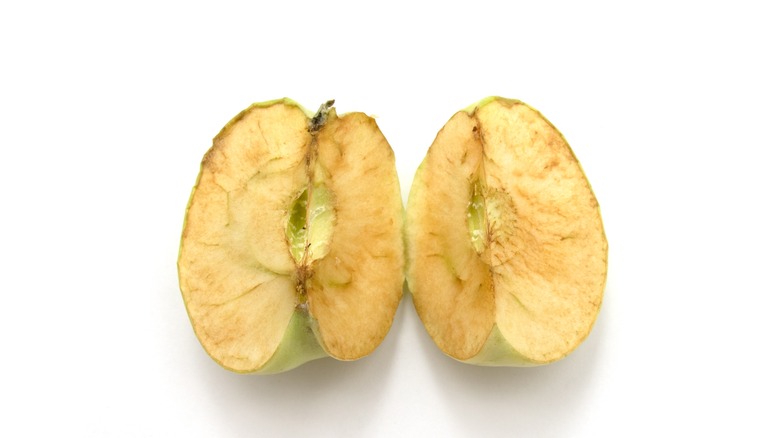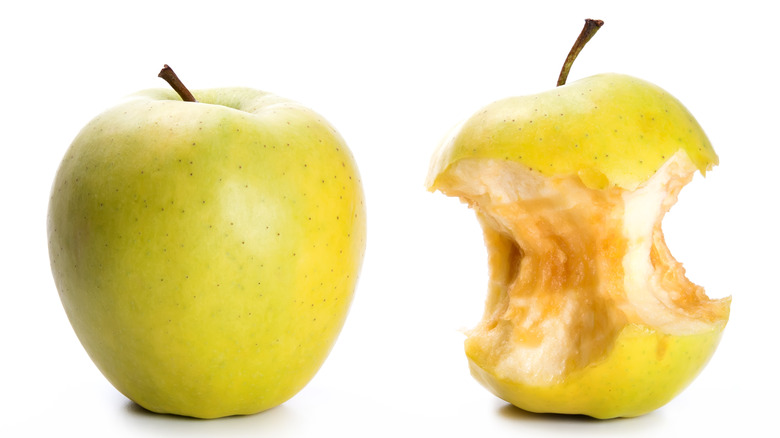What's Really Happening When Fresh Foods Begin To Turn Brown
If you love filling your diet with all sorts of fresh produce, from apples to avocados to potatoes to beets, then you've no doubt dealt with a phenomenon that has threatened to ruin many a crudité platter: browning. As we've probably all been aware of since we were kids — when we learned that the apples mom or dad sliced in the morning and packed in our lunch boxes were brown by noon — many types of produce are subject to turning brown once they've been sliced and left exposed to the air (via Scientific American).
While this effect is totally harmless and often doesn't even affect the flavor of the affected fruit or vegetable, it's not really that attractive, which is why home cooks employ all sorts of methods — such as tossing apple slices with lemon juice – to stave off the browning effect.
After all these years of dealing with brown produce, however, do you know what causes it? If not, read on to find out.
The enzymes found in plant tissues are responsible for browning
We've all been there: One minute, you're slicing avocados for your favorite guacamole recipe, and the next, the avos have turned an unappetizing shade of brown. Many of us know that applying citrus can help stave off this process — perhaps part of the reason why guacamole recipes include fresh lime juice — but you may have wondered: What's the reason for this browning?
Cook's Illustrated explains that the chemical effect, known as enzymatic browning, is due to a natural enzyme found in the tissues of all plants. The enzyme, polyphenol oxidase (PPO, for short), speeds up oxidation, which is the reaction of the polyphenols in produce as they come into contact with oxygen. Possibly a mechanism to help address the plant's injury to its tissues that results from slicing or tearing, the reaction causes browning. Sliced potatoes turn black; bananas brown and soften; and mushrooms become easily bruised, all due to the presence of PPO.
As noted by Scientific American, almost all plant, fungus, and animal tissues contain PPO, but in varying amounts. This is why, for example, a Granny Smith apple tends to brown more slowly than a Red Delicious; it's also why desirably brown food items such as coffee, tea, and chocolate boast their dark hue. As many home cooks know, incorporating plenty of citrus can help stave off enzymatic browning: That's because the citric and ascorbic acids found in those fruits are both antioxidants, meaning they limit the oxidation of other molecules.

